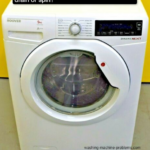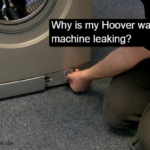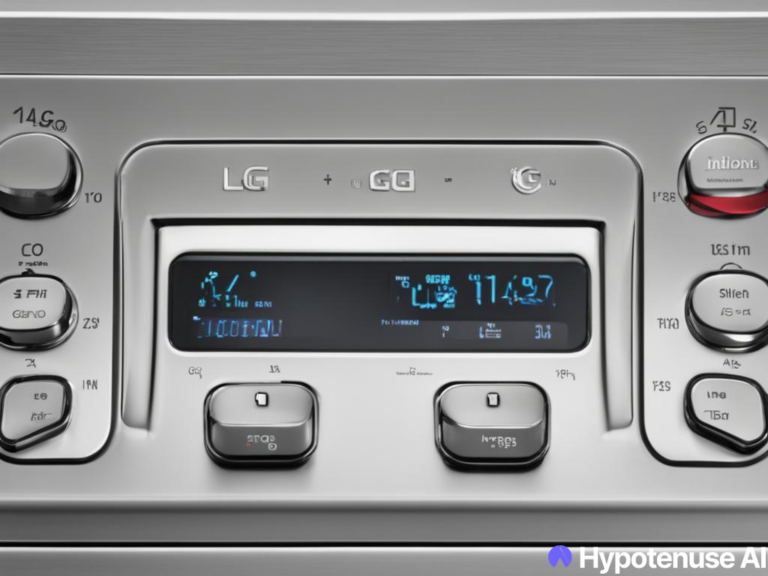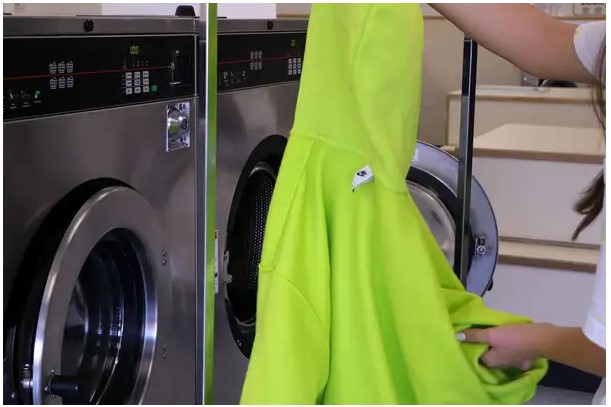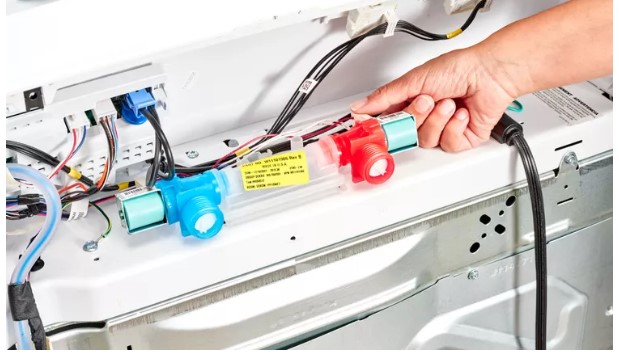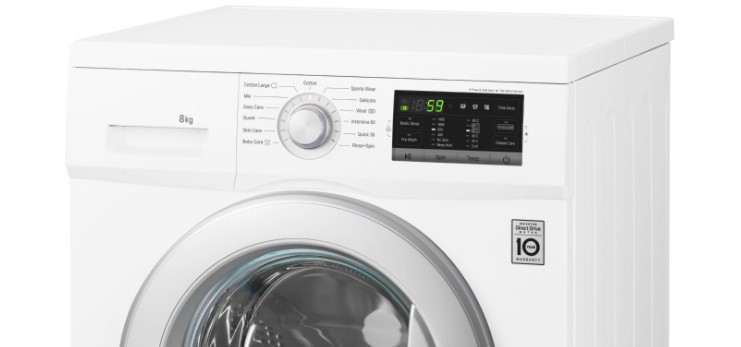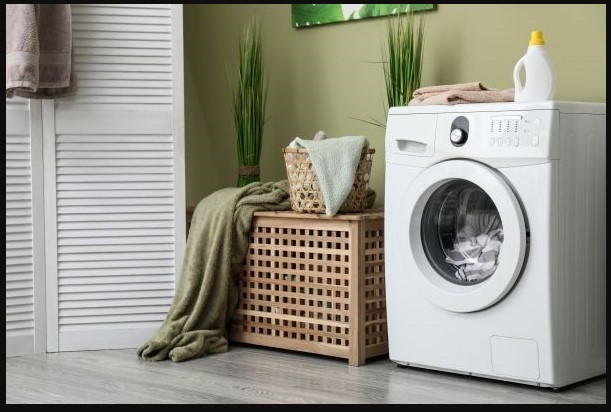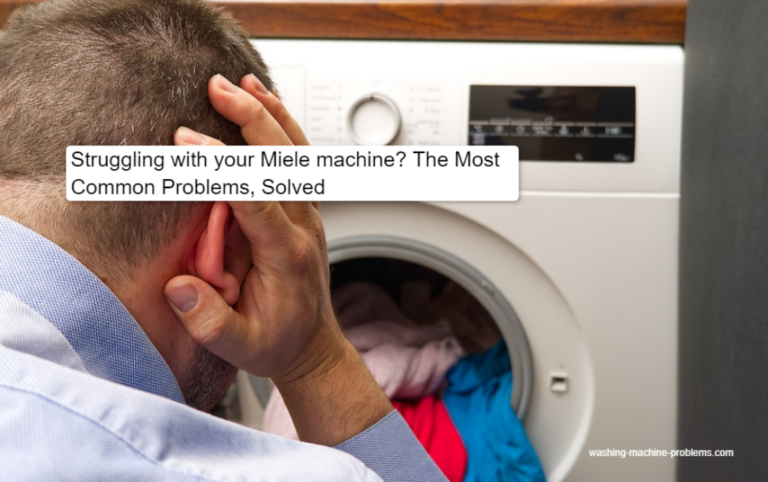Troubleshooting Your Hoover Washing Machine’s Most Common Problems
Table of Contents
Have you found yourself frustrated when your trusty Hoover washing machine starts acting up? As someone who has gone through the trials and tribulations of troubleshooting various appliance issues, I feel your pain. The good news is that I’ve identified the most common problems that crop up with Hoover washers and have solutions to get you back to happily doing laundry in no time.
In this quick guide, I’ll walk you through the questions I get asked the most about Hoover washers, like: Why won’t my Hoover spin? What does error code E02 mean? Why is my Hoover leaking? How do I reset my Hoover washing machine? By the end of this article, you’ll be armed with the knowledge to diagnose and fix most any problem with your Hoover washer. No more waiting around for an expensive technician or, worse, having to buy a whole new washer! Take it from me: with a little bit of troubleshooting know-how, you’ll have your Hoover happily chugging along for years to come.
What Are the Most Common Issues With Hoover Washing Machines?
As an avid Hoover washing machine owner, I’ve dealt with my fair share of issues over the years. But don’t worry; most problems are easily fixable if you know what to look for!
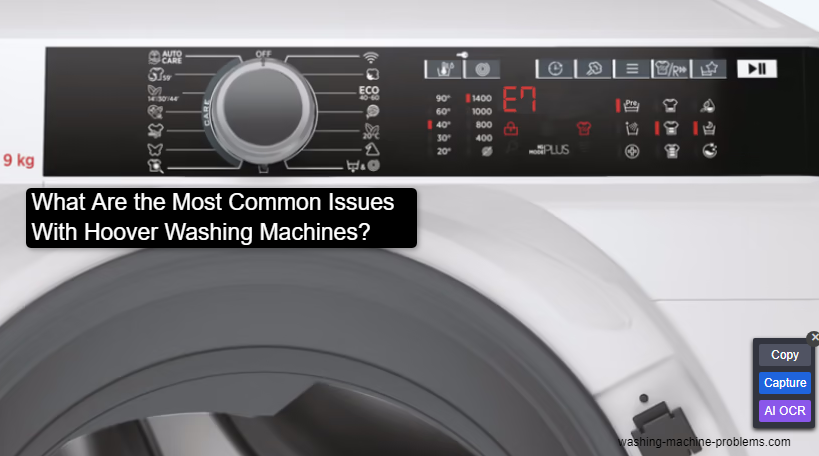
The most common problem by far is the dreaded “LE” error code staring back at you from the display. This usually means there’s a leak in the water supply hose or the drain hose. Double check that all hoses are properly connected and not kinked or damaged. If everything looks OK, it may be a problem with the water level sensor, in which case a repair person can replace it for you.
Other annoyances include the machine not spinning, making loud noises during the spin cycle, or leaving your clothes still soaked after the final rinse. The likely culprits are a broken drive belt, an unbalanced load, or a malfunctioning spin bearing. For the belt or bearing, you’ll need a technician to service the washer. But for an unbalanced load, simply redistribute the clothes more evenly and run a spin cycle again.
The washer not draining or filling properly can also be frustrating. Clogged pumps, kinked hoses, and broken water inlet valves are the usual suspects. Clean out any debris in the hoses and pumps, check all hose connections, and test the water inlet valves. If problems persist, it’s best to have a professional inspect and repair or replace any malfunctioning parts.
With regular maintenance and by troubleshooting common issues, your trusty Hoover washer can keep running for years to come. Let me know if you have any other questions!
Why is my Hoover washing machine not spinning or draining?
Why is my Hoover washing machine not spinning or draining? As an avid DIYer, I’ve encountered this problem a time or two and have some tips to get your Hoover up and running again in no time.
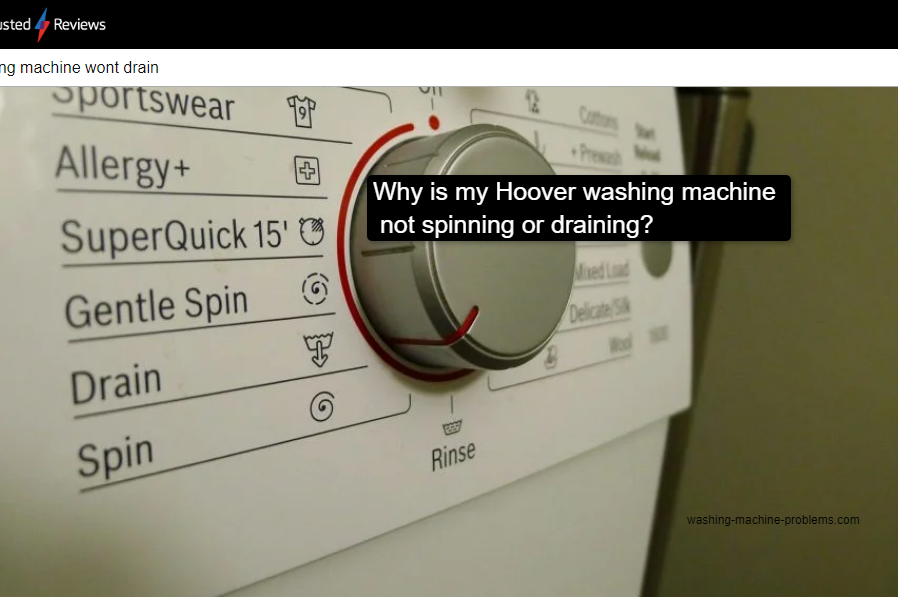
Check the drain hose.
The most common culprit is a clogged drain hose. Turn off your washer, disconnect the drain hose from the back of the machine, and unscrew the hose clamp. Clear out any debris inside the hose using a hanger or plumber’s snake. Reconnect everything, turn the washer back on, and run a rinse cycle with 2 cups of white vinegar; this will help break up any remaining blockages.
Inspect the drain pump.
If your drain hose is clear but water still isn’t pumping out, the internal drain pump could need replacement. The drain pump pushes water out of the washer during the spin and drain cycles. Over time, pumps can become worn out or clogged. Replacing a drain pump isn’t too difficult, and parts are readily available online or at most appliance parts stores.
Check the spin belt.
The spin belt rotates the spin basket at high speeds to extract water from clothes. If the belt is broken or has slipped off, the washer won’t spin properly. To access the belt, you’ll need to remove the back panel of the washer. Check that the belt is still intact, tight, and properly aligned. If damaged or loose, replace the belt.
With a little troubleshooting, you’ll have your Hoover washing machine spinning and draining like new again. Don’t hesitate to contact Hoover customer service for additional help or advice. They’re available to provide useful tips and recommendations specific to your washer model. Happy laundering!
What Should I Do If My Hoover Washing Machine Is Leaking Water?
Oh no, your Hoover washing machine is leaking water. Don’t panic; I’ve got you covered. As an avid DIYer, I’ve troubleshooted my fair share of appliances and want to share some tips to help resolve this issue.
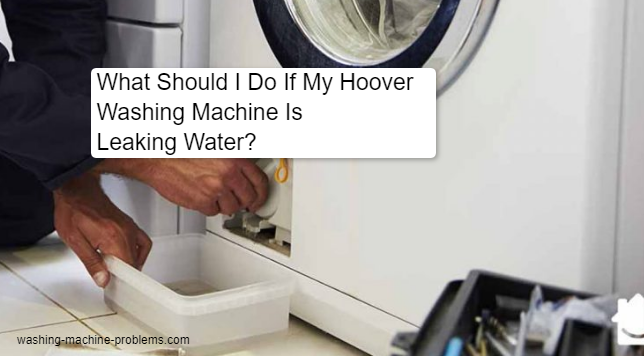
First things first, check the drain hose for any kinks, twists, or damage. The drain hose removes water from the machine after the spin cycle. If it’s bent or has holes, it won’t drain properly and will leak. Simply straightening or replacing the hose should do the trick.
Next, inspect the fill hoses that supply water to your washer. Over time, the rubber washers inside the hoses can wear out or break, causing drips or sprays. Tightening the hose connections may temporarily help, but for the best fix, replace the fill hoses. This is an easy DIY task, and the hoses are inexpensive.
Do I need to call a repair technician?
If the issue isn’t the drain hose or fill hose, it’s probably a good idea to call for professional help. The leak could be from a failed water pump, door seal, or other internal component that requires disassembling the washer to access and repair. It’s not worth risking water damage to your home or electrocution from exposed wires. Let the pros handle it.
Some other things to check:
- Make sure the washer is level. An unleveled machine can cause excess vibration and leaks.
- Check that the door seal is clean and not torn or damaged. The seal ensures water stays in the drum.
- Ensure the end of the drain hose is not submerged in water. It should hang over the side of a standpipe.
- Run an empty hot wash cycle with 2 cups of white vinegar. The vinegar can help loosen mineral buildup and prevent leaks.
I hope these troubleshooting tips help you get your Hoover washing machine leak under control. But when in doubt, don’t hesitate to call a professional—your time, money, and safety are worth it! Let me know if you have any other questions.
Why Is My Hoover Washing Machine Making Loud Noises?
Oh no, is your Hoover washing machine making strange noises? As an avid do-it-yourselfer, I’ve run into this problem before with my own washer. The good news is that the solution is often an easy fix. Here are some of the most common reasons your Hoover may be getting loud and what you can do about it.
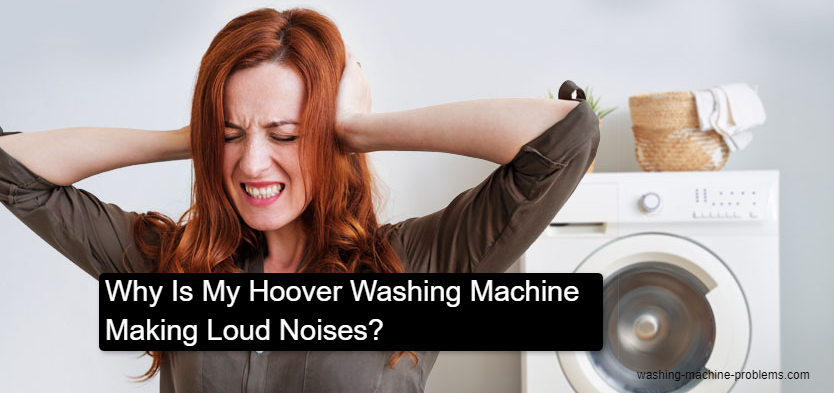
Is the wash plate or drum loose?
The wash plate, or agitator, and drum are essential moving parts in your washer that can become loose or damaged over time. If you hear a loud scraping or grinding noise during the wash cycle, these parts may need tightening or replacement. I’ve found that tightening the bolts that secure the wash plate or drum can often solve the problem. If that doesn’t work, you may need to call a technician to replace the damaged parts.
Is there an object stuck in the pump or hoses?
Small items like coins, hair ties, or socks can sometimes get sucked into the drain pump or hoses in your washer, causing a loud rattling or squealing sound. Checking and clearing these parts is pretty straightforward. Just tilt your washer back to access the pump and hoses, then disassemble and remove any debris. Your washer should run quietly again once everything is cleared out.
Are the shock absorbers or suspension rods damaged?
The shock absorbers and suspension rods support your washer’s drum and help reduce noise. If these parts become loose, damaged, or detached, you may hear loud banging, rattling, or squeaking sounds as the drum vibrates and hits other components. Replacing the shock absorbers and suspension rods typically requires a technician to service them.
Is the belt loose or broken?
A loose or broken drive belt is a common reason for loud squealing or grinding noises in Hoover washers. The drive belt rotates the drum and agitator. Over time, the belt can wear out or snap, causing the noises. Replacing the belt yourself is often an easy, inexpensive fix. You may just need to purchase a new belt, open up the washer cabinet, and route the new belt around the drum and motor pulleys.
I hope this helps you get to the bottom of your Hoover washer’s annoying noises. With some patience and troubleshooting, you’ll have it running quietly again in no time! Let me know if you have any other questions.
How Can I Fix Error Codes on My Hoover Washing Machine?
As an avid Hoover washing machine owner, I’ve had my fair share of error codes pop up on the display. At first, they can seem frustrating, but most are easy to resolve once you know the cause. Here are the most common error codes I’ve encountered and how I fixed them:.
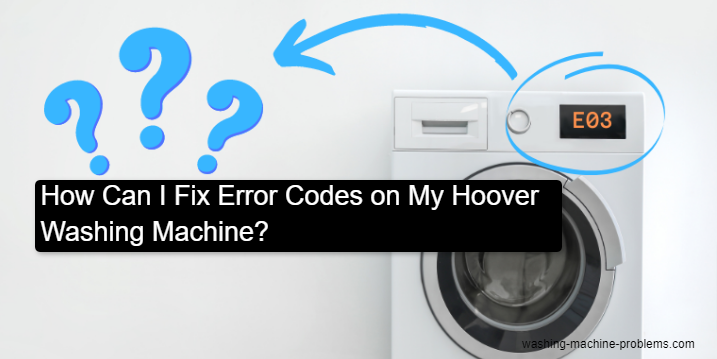
E03: Water Inlet Error
This means there’s an issue with the water inlet valve or water supply. I’ve found the hose is usually kinked or the valve screens are clogged. To fix:
- Straighten or replace the inlet hoses.
- Clean the valve screens of debris.
- Check that the water supply is fully open.
Once I’ve done this, the code clears, and it’s back to washing!
E04: Water Drainage Error
If I see an E04, it means there’s a problem draining the water. Typically, the drain pump filter is clogged or the drain hose is kinked. Here’s what I do:
- Clean out the drain pump filter of any debris like coins, hairpins, or lint.
- Ensure the drain hose isn’t kinked and has a proper slope to drain fully.
- Test the drain pump to ensure it’s working properly. Replace if needed.
After performing these steps, my washer was draining and spinning in no time!
Other Common Codes
A few other codes I’ve seen are:
- E01: Thermistor error: Check thermistor connections and replace if faulty.
- E20: Motor error: You may need to replace the motor control unit or stator motor. Call for service.
- E40: Door lock error: Reseat door lock or switch; replace door lock if needed.
With regular maintenance and troubleshooting, I’ve found most Hoover error codes are easily solved DIY-style. However, for any codes relating to electrical or mechanical components, it’s best to have them checked by a professional to avoid the risk of injury or further damage.
You can learn more about Hoover washing machine error codes by watching this video.
My Hoover Washing Machine Won’t Turn On—How Can I Fix This?
Oh no, your Hoover washing machine won’t turn on! Don’t panic; this is usually an easy fix. Here are a few things to try before calling a repair technician:
Did you check the power supply?
The most obvious issue is a power supply problem. Double check that the washer’s power cord is plugged securely into the wall outlet. If it’s plugged in but still not turning on, try plugging in another device to confirm the outlet is working. If not, you may need to flip the breaker switch for that outlet. Whew, problem solved!
Is the door latch working properly?
Hoover washers have a safety mechanism that prevents the washer from operating when the door is open. If the door isn’t closing fully or the door latch is malfunctioning, the washer won’t start. Inspect the door and latch for any obstructions preventing it from closing. You may need to wiggle or push firmly on the door to get it to click into place. Once the door is securely closed, try turning the washer on again.
Could the control panel or timer be faulty?
If the power supply and door latch are working fine but the washer still won’t start, the problem may lie with the control panel or timer board. These parts can wear out or become damaged over time and with frequent use. You’ll need to contact Hoover Service to test and potentially replace either the control panel or timer board. They should be able to get your washer up and running again quickly!
I hope one of these troubleshooting tips helps get your Hoover washing machine back in working order. Let me know if you have any other questions! I’m happy to help in any way I can.
Why is my Hoover washing machine leaving dirt on clothes?
Why is my Hoover washing machine leaving dirt on my clothes? Ugh, this is so frustrating! A washing machine that doesn’t clean well is basically useless.
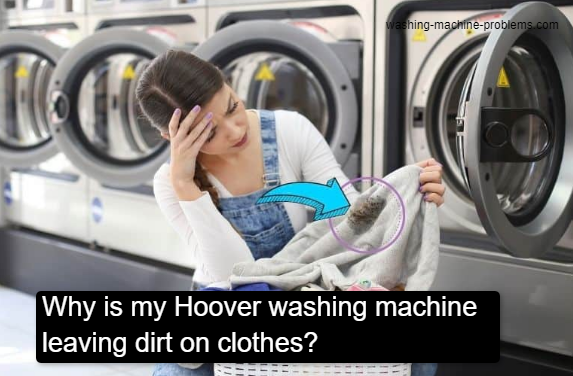
Are the filters clogged?
The most common culprit is clogged filters. Your Hoover washing machine has a few filters to prevent debris from entering the pump and hoses. If these get clogged, water flow is reduced, which prevents dirt and grime from being washed away properly. To clean the filters, unplug the washer and locate the access panel, usually at the bottom front or back of the machine. Remove the panel, and you’ll see either a small door or filters that unscrew. Clean out any debris, reassemble everything, and run a hot wash cycle with 2 cups of white vinegar to prevent future buildup.
Is the correct amount of detergent being used?
Using too little or too much detergent can prevent clothes from getting clean. For average loads in a Hoover washer, 2-3 tablespoons of HE detergent are typically enough. Using too much detergent leaves excess suds that cling to clothes, while too little won’t lift stains and soils effectively. Make sure you’re using detergent specifically for high-efficiency washers, and follow the directions on the packaging for your load size.
Do I need to run a cleaning cycle?
If clogged filters and detergent issues have been ruled out, it’s a good idea to run a cleaning cycle in your Hoover washing machine. Over time, soap residue, hard water mineral buildup, and mildew can accumulate inside the drum and hoses. A cleaning cycle uses a special cleaning agent, like bleach or vinegar, on a hot wash and rinse to remove these deposits. After running a cleaning cycle, rewash the dirty clothes, and they should come out fresh and clean!
By checking these potential issues, you should be able to get your Hoover washing machine washing dirt-free again in no time. Let me know if you have any other questions!
Quick Read: Top 5 Tips for Troubleshooting a Hoover Washing Machine
As an avid Hoover washing machine owner, I’ve had my fair share of troubleshooting moments. But after years of experience, I’ve picked up a few tips to get my Hoover humming again in no time. Here are my top 5 troubleshooting tips:
1. Check the water supply.
The most obvious issue is usually the water supply. Double check that both the hot and cold faucets behind your washer are turned on full blast. While you’re back there, check for any kinks in the hoses, too. An easy fix, but an easy step to skip in frustration!
2. Level the washer.
If your Hoover is rocking and rolling during the spin cycle, it probably needs leveling. An unleveled washer will make a racket and not clean properly. Grab your level and washer feet, and get ready to spin it into shape!
3. Clean the drain pump filter.
If your Hoover isn’t draining, the first thing to check is the drain pump filter. Pull out your filter and give it a good rinse to remove any debris clogging the drain flow. Put it back in, and your Hoover should be draining in no time.
4. Tighten the belt.
If there’s a burning rubber smell coming from your Hoover, the belt likely needs tightening or replacing. Tightening the belt is an easy fix, but replacing it may require a technician’s visit. Either way, a slipping belt is slowing your spin and needs adjustment pronto.
5. Reset and retry.
As with any technology these days, sometimes a quick reset is all that’s needed. Unplug your Hoover for a few minutes to allow it to fully power down. Plug it back in, and retry your cycle. This reboot can reset any software glitches and get your washing machine spinning again.
Following these quick tips will have your Hoover washing machine back up and running in no time. But if issues persist, don’t hesitate to contact a technician to diagnose and repair your washer. A well-maintained washer means clean clothes for years to come!
Hoover Washing Machine Troubleshooting FAQs
I absolutely love my Hoover washing machine and how well it gets my clothes clean, but occasionally little issues pop up that are usually easy to fix. Here are the most common problems I’ve run into and how I got my Hoover back up and running in no time.
Why won’t my Hoover washing machine drain or spin?

If your Hoover fills with water but won’t drain or spin, the first thing to check is if the drain hose is kinked or clogged. Make sure the hose is free of any blockages and not bent. You should also clean the drain pump filter—it’s usually located at the bottom of the machine behind a small access door. Simply unscrew the filter, remove any debris, rinse it off, and put it back in place. This typically does the trick and gets your Hoover draining and spinning properly again.
Why is my Hoover washing machine leaking?

Leaking is never fun to deal with, but the source is often easy to locate. The most common causes are problems with the water inlet hoses, drain hoses, or door seal. Inspect all hoses for cracks, holes, or loose connections, and tighten or replace them as needed. The door seal, or gasket, can also get damaged over time and cause a leak. You may be able to patch a small hole, but it’s best to replace the entire gasket to prevent future leaks.
Why won’t my Hoover washing machine start?

If your Hoover won’t start at all, first check that it’s plugged in and the outlet is working. Next, check the door—if it’s not fully closed, the washer won’t run. The start button or other control panel buttons may also be stuck or broken, so try pressing them a few times. If that doesn’t work, the problem could be with the control board or timer. At this point, it’s best to have an appliance technician test and service the washer.
In the end, most issues with Hoover washing machines can be resolved with a little troubleshooting. But for safety, if you ever suspect a problem with the power supply or motor, it’s best to contact Hoover Service right away. With some TLC and preventative maintenance, your Hoover washer should give you many years of service and keep your clothes fresh and clean.
Conclusion
After reading through some of the most common issues with Hoover washing machines, I hope you’re feeling more empowered to troubleshoot and solve problems on your own. There’s nothing more frustrating than an appliance on the fritz, but with a little patience and some helpful tips, you can get your washer up and running again in no time. Remember, if all else fails and you continue having issues, don’t hesitate to contact Hoover’s customer service directly. They’re there to help and will work with you to find a solution. Now go ahead and put in that next load of laundry with confidence, knowing you’ve got the skills and support to tackle whatever issue may arise! Happy washing, and best of luck keeping those clothes clean.

